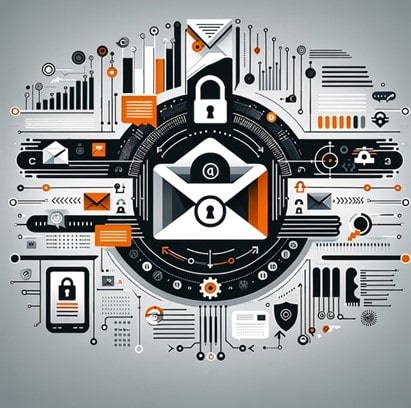Email has become a ubiquitous form of communication, used for everything from personal correspondence to sensitive business negotiations. However, this convenience also brings vulnerability; emails can be intercepted, read, and even altered by unauthorized parties during transmission. To protect privacy and ensure the confidentiality of email content, encryption has become a vital tool. Here, we explore how email encryption works, its importance, and real-life cases where it has successfully safeguarded information.
Understanding email encryption
Email encryption transforms readable text into encoded messages, which can only be deciphered by someone who has the right key. This process ensures that if emails are intercepted during transmission, they remain undecipherable to unauthorized readers.
Types of email encryption
- End-to-End Encryption: Encrypts emails at the origin and decrypts them only at the destination, preventing even email service providers from reading the content.
- Transport Layer Security (TLS): Encrypts the connection between email servers to protect the transfer of data.
- Pretty Good Privacy (PGP) and its open-source counterpart, GnuPG (GPG): Encrypts emails using a combination of public-key and symmetric-key cryptography.
The Importance of email encryption
- Privacy: Keeps personal conversations confidential.
- Security: Protects sensitive information from cybercriminals.
- Compliance: Meets legal and regulatory requirements for data protection.
- Trust: Builds customer confidence in business communications.
Real-Life Application and Case Studies
Case Study 1: Healthcare Communication
In the healthcare sector, email encryption is crucial due to the sensitive nature of medical records. A notable case involves a large hospital network that implemented email encryption to protect patient data in compliance with the Health Insurance Portability and Accountability Act (HIPAA). By doing so, they not only secured patient communication but also avoided potential legal penalties.
Reference: The U.S. Department of Health & Human Services provides guidelines on HIPAA compliance and email encryption at HHS HIPAA Guidance.
Case Study 2: Financial Institutions
A Canadian bank has implemented email encryption solutions to secure the exchange of sensitive data with its clients and staff. This strategy, in compliance with the guidelines from the Office of the Superintendent of Financial Institutions (OSFI), includes multi-factor authentication and identity verification, thus enhancing protection against fraud and phishing. This strict regulatory framework ensures that clients' personal and financial information remains confidential and secure, contributing to maintaining trust and stability in the Canadian financial sector.
Reference: Office of the Superintendent of Financial Institutions
Implementing email encryption
Adopting email encryption can be straightforward, with many email services now offering built-in encryption features. For businesses requiring more robust solutions, third-party encryption services are available.
Best Practices for email encryption
- User Training: Educating users on the importance of encryption and how to use it effectively.
- Policy Implementation: Developing clear policies for when and how to encrypt emails.
- Regular Audits: Conducting audits to ensure compliance and identify any potential vulnerabilities.
Additional Resources
- Electronic Frontier Foundation (EFF): Offers a comprehensive guide on PGP encryption at EFF PGP Guide.
- Global Cyber Alliance (GCA): Provides tools and resources for implementing DMARC, an email authentication protocol, at GCA DMARC Guide.
Email encryption acts as a shield, protecting the integrity and confidentiality of digital correspondence. As cyber threats evolve, the role of encryption only grows in importance. By understanding its significance and implementing strong encryption practices, individuals and organizations can greatly enhance their digital security and preserve the trustworthiness of their communications.
With the right approach, email encryption becomes less of an obstacle and more of an enabler of secure, compliant, and private communication in the modern world. Whether you're an individual seeking to keep your personal emails private or an organization aiming to protect sensitive information, email encryption is an indispensable tool in your digital security arsenal.


